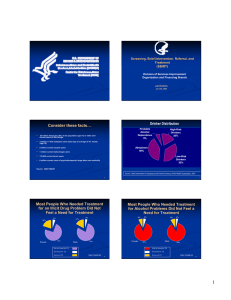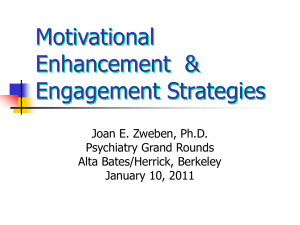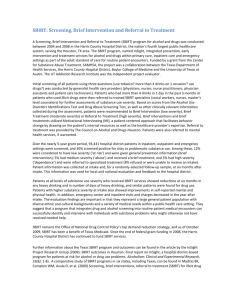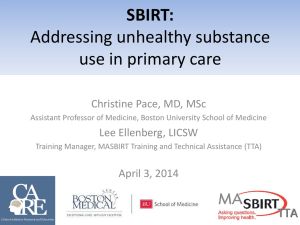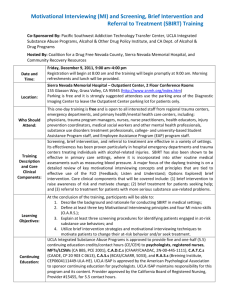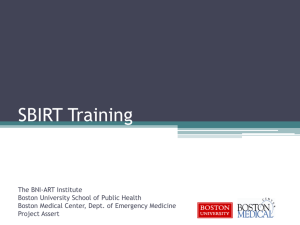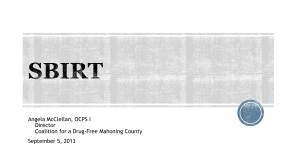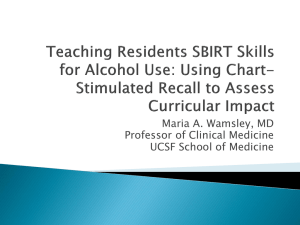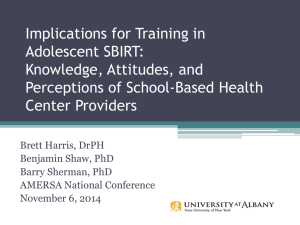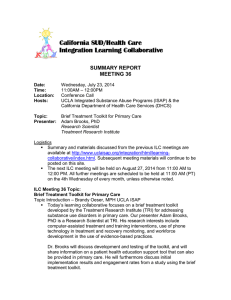National Network to Eliminate Disparities (NNED) in Behavioral Health
advertisement
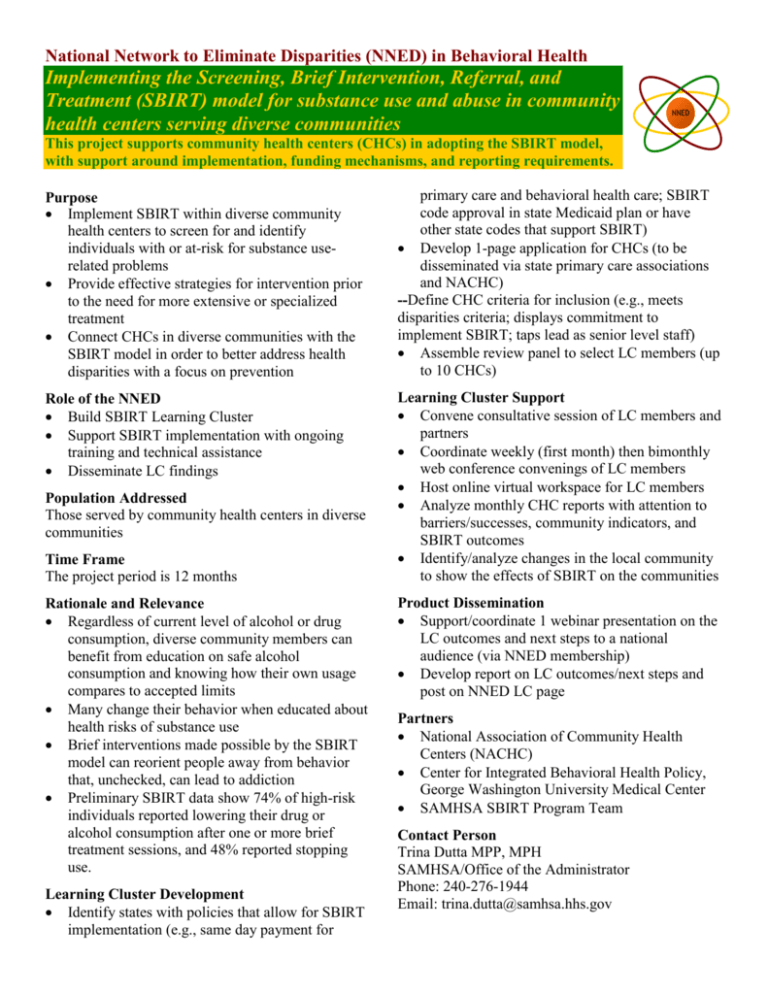
National Network to Eliminate Disparities (NNED) in Behavioral Health Implementing the Screening, Brief Intervention, Referral, and Treatment (SBIRT) model for substance use and abuse in community health centers serving diverse communities NNED This project supports community health centers (CHCs) in adopting the SBIRT model, with support around implementation, funding mechanisms, and reporting requirements. Purpose Implement SBIRT within diverse community health centers to screen for and identify individuals with or at-risk for substance userelated problems Provide effective strategies for intervention prior to the need for more extensive or specialized treatment Connect CHCs in diverse communities with the SBIRT model in order to better address health disparities with a focus on prevention primary care and behavioral health care; SBIRT code approval in state Medicaid plan or have other state codes that support SBIRT) Develop 1-page application for CHCs (to be disseminated via state primary care associations and NACHC) --Define CHC criteria for inclusion (e.g., meets disparities criteria; displays commitment to implement SBIRT; taps lead as senior level staff) Assemble review panel to select LC members (up to 10 CHCs) Role of the NNED Build SBIRT Learning Cluster Support SBIRT implementation with ongoing training and technical assistance Disseminate LC findings Learning Cluster Support Convene consultative session of LC members and partners Coordinate weekly (first month) then bimonthly web conference convenings of LC members Host online virtual workspace for LC members Analyze monthly CHC reports with attention to barriers/successes, community indicators, and SBIRT outcomes Identify/analyze changes in the local community to show the effects of SBIRT on the communities Population Addressed Those served by community health centers in diverse communities Time Frame The project period is 12 months Rationale and Relevance Regardless of current level of alcohol or drug consumption, diverse community members can benefit from education on safe alcohol consumption and knowing how their own usage compares to accepted limits Many change their behavior when educated about health risks of substance use Brief interventions made possible by the SBIRT model can reorient people away from behavior that, unchecked, can lead to addiction Preliminary SBIRT data show 74% of high-risk individuals reported lowering their drug or alcohol consumption after one or more brief treatment sessions, and 48% reported stopping use. Learning Cluster Development Identify states with policies that allow for SBIRT implementation (e.g., same day payment for Product Dissemination Support/coordinate 1 webinar presentation on the LC outcomes and next steps to a national audience (via NNED membership) Develop report on LC outcomes/next steps and post on NNED LC page Partners National Association of Community Health Centers (NACHC) Center for Integrated Behavioral Health Policy, George Washington University Medical Center SAMHSA SBIRT Program Team Contact Person Trina Dutta MPP, MPH SAMHSA/Office of the Administrator Phone: 240-276-1944 Email: trina.dutta@samhsa.hhs.gov

